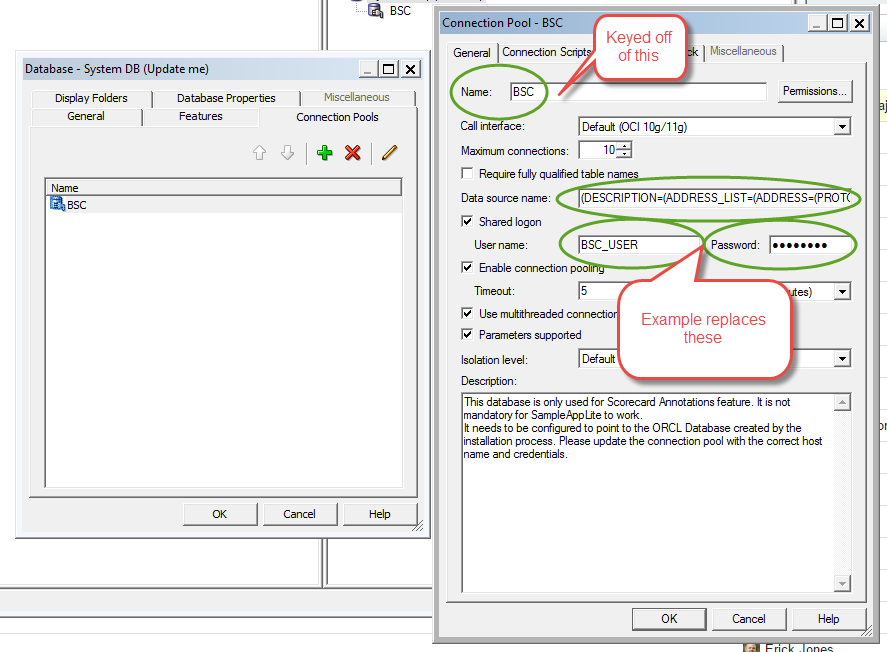/
RPD Configuration File
RPD Configuration File
You can either
- Save config file during build operation as artifact, or
- Use SCM operation to export configuration file and save it as artifacts. Artifacts are available at deployment time.
- Extract it from SCM during deploy workflow or
- Use SCM operation to export configuration file prior to running deploy operation.
- Use absolute path to location on server. (not recommended as it requires manual setup on server)
- Configuration files can use FlexDeploy variables.
- See Property Replacement Support.
- You can use any property available in FlexDeploy or configure user defined property on Workflow Properties section.
Understanding the RPD configuration file
The RPD configuration file consists of information to replace variables, connection pool users, datasources and passwords within the RPD. An example file is shown below.
#Property Replacement File
# The format is
# What Type of Replacement:Name Key:Value
connectionpool_ds:BSC=${{OBI_BSC_DSN}}
connectionpool_user:BSC=${{OBI_BSC_USER}}
connectionpool_pass:BSC=${{OBI_BSC_PASSWORD}}
#You can also replace variable values like this:
#variable:name:value
variable:BI_EE_HOME=${{FD_ORACLE_BI_HOME}}
The Red text above is the property type. The property types in the table below are the available options to replace in the RPD.
| Property Type | Description |
|---|---|
| variable | Indicates this line is to replace an RPD variable value. |
| connectionpool_user | Indicates this line is to replace a connection pool user. |
| connectionpool_ds | Indicates this line is to replace a connection pool datasource. |
| connectionpool_pass | Indicates this line is to replace a connection pool password. |
The Green text above is the property key. In this case this will either be the variable name or the connection pool name which you want to edit.
The Purple text above is the value to be replaced as the datasource reference on deployment.
, multiple selections available,
Related content
RPD Configuration File
RPD Configuration File
More like this
RPD Configuration File Setup
RPD Configuration File Setup
More like this
RPD Configuration File Setup
RPD Configuration File Setup
More like this
RPD Configuration File
RPD Configuration File
More like this
RPD Configuration File
RPD Configuration File
More like this
RPD Configuration File
RPD Configuration File
More like this
The following macros are not currently supported in the footer:
- style
